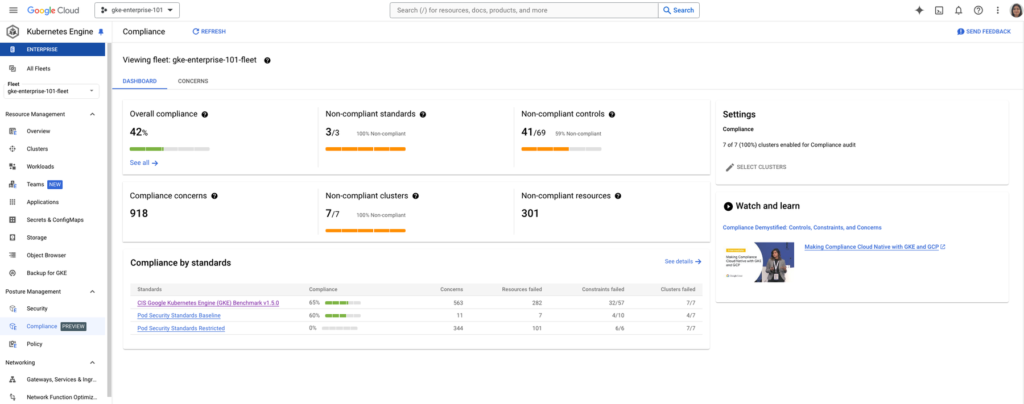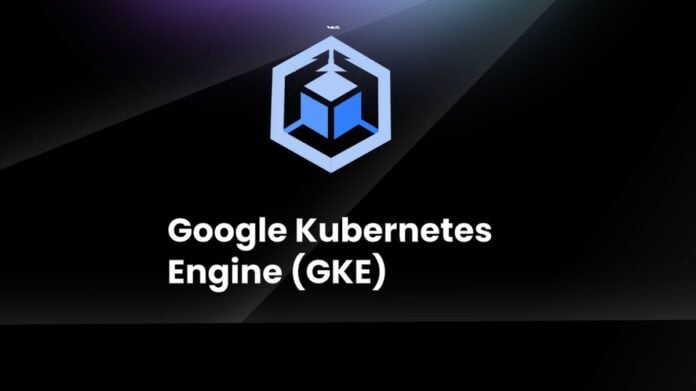Google Kubernetes Engine Enterprise
Because Kubernetes is a dynamic, distributed platform with short-lived workloads, maintaining compliance is a changing objective. Moreover, Kubernetes expertise is severely lacking, and compliance standards are often changing.
Google Cloud is thrilled to provide Google Kubernetes Engine Enterprise(GKE Enterprise) clients a feature that will change the game: integrated, fully controlled GKE Compliance within GKE posture management. It is now simpler than ever to achieve and maintain compliance for your Kubernetes clusters.
Google GKE Enterprise
GKE versions
Using Google’s infrastructure, you can build and manage containerized apps with Google Kubernetes Engine (GKE), Google’s managed Kubernetes service. It gives you the operational strength of Kubernetes while taking care of a lot of the fundamental parts, such the control plane and nodes.
There are two tiers, or editions, of GKE features: an enterprise tier that has robust tools for controlling, managing, and running containerized workloads at corporate scale, and a regular tier that has all of the fundamental functionality for all GKE customers.
What makes GKE Enterprise unique?
Running a single cluster is typically no longer adequate for enterprises as they adopt cloud-native technologies like containers, container orchestration, and service meshes. Organizations install several clusters for a variety of reasons in order to meet their commercial and technical goals. Keeping production and non-production environments apart, adhering to various regulatory requirements, and setting up services across tiers, locations, or teams are a few examples.
However, there are additional challenges and overhead associated with employing numerous clusters in terms of consistent setup, security, and management. For instance, manually configuring one cluster at a time can be error-prone, and pinpointing the specific location of these faults can be difficult. Big businesses frequently have complicated organizational structures as well, with numerous teams managing, monitoring, and running their workloads across various clusters.
Google Cloud’s Anthos, a container platform with a number of features for working at enterprise scale, has previously assisted businesses in solving issues similar to this one. The foundation of this platform is the concept of the fleet, which is a logical collection of Kubernetes clusters that may be managed jointly and share namespaces, services, and/or identities for mutual benefit.
You can utilize a wide range of fleet-enabled capabilities thanks to the fleet’s presumed concepts of trust and sameness, which include:
- Tools for managing configuration and rules that make it easier for you to operate at scale by automatically adding and changing the same features, configuration, and security guidelines for the whole fleet.
- Fleet-wide networking technologies, such as service mesh traffic management tools and Multi Cluster Ingress for applications spanning multiple clusters, assist you in managing traffic throughout your entire fleet.
- Features for identity management that assist you in setting up authentication for users and fleet workloads regularly.
- Observability capabilities that enable you to keep an eye on and troubleshoot the health, resource usage, and security posture of your fleet clusters and applications.
- Service Mesh offers strong tools for networking, observability, and application security for microservice-based apps operating in your fleet.
By completely integrating these features into GKE, GKE Enterprise creates an integrated container platform that further simplifies the adoption of best practices and concepts that have been gleaned from Google’s experience running services.
Moreover, GKE Enterprise offers strong new team management tools. Platform administrators may now more easily assign fleet resources to different teams and provide application teams with individual dashboards and KPIs that are tailored to their specific needs and workloads.
What makes a difference?
You may evaluate your GKE clusters and workloads more quickly and easily by using GKE Compliance to compare them to industry benchmarks, control frameworks, and standards like:
The benchmark for safe GKE settings is the CIS Benchmark for GKE.
To safeguard your workloads, Pod Security Standards (PSS) provide baseline and limited profiles.
You don’t need to bother about developing or purchasing other tools because GKE Compliance is integrated into GKE and is completely controlled by Google. You may concentrate on your business objectives because there is no need for complicated setup or continuous maintenance.
With centralized compliance information updated every 30 minutes, the GKE Compliance dashboard provides you with a comprehensive picture of your fleet of clusters’ compliance status.


By selecting specific constraints, you can delve deeper into compliance reports to:
- View information regarding the compliance check
- View the list of resources that aren’t complying.
- Check out the fixes to address the infraction.
Control adherence at scale
The enhanced compliance functionalities in GKE Enterprise are especially noteworthy for enterprises that have several teams and groups. It’s now simple to examine compliance reports by cluster or fleet, which simplifies compliance understanding. Furthermore, the GKE Compliance feature’s complete management is one of its best features. Your clusters don’t require any additional software to be installed or maintained. All you have to do is activate it; the rest is handled by us. Furthermore, it comes free of charge with your GKE Enterprise licence!
Check out the Compliance tab in GKE Posture and log into a GCP project with clusters enabled by GKE Enterprise to get started. Find out more about how to begin a free trial if you’re new to GKE Enterprise.
GKE Enterprise Pricing
Google Kubernetes Engine (GKE) Enterprise uses a per-vCPU pricing model, meaning you pay based on the number of virtual CPUs (vCPUs) allocated to your GKE Enterprise clusters. Here’s a breakdown:
Price per vCPU per Hour: $0.00822
Billing: Hourly, charged based on the maximum number of vCPUs allocated to your cluster throughout the hour.
Additional Costs: There might be additional costs for separate services like Multi-Cluster Ingress, which is billed based on the number of Pods that serve as backends ($0.0041 per backend Pod per hour).
Important Note: Unlike the standard GKE edition with a free tier, GKE Enterprise doesn’t have a separate free tier. Enabling it in your project incurs charges based on vCPU usage.
For a more precise estimate, you’d need to consider the number of vCPUs you plan to allocate to your GKE Enterprise clusters. You can find more details on GKE Enterprise pricing on the Google Cloud Platform website.


